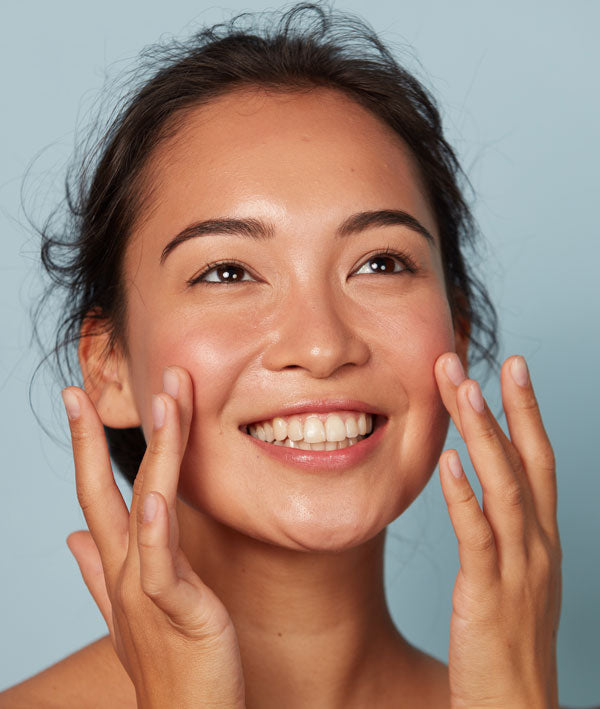Niacinamide has earned its place as a skincare superstar. Known for its versatility, this form of vitamin B3 can do everything from brightening dull skin to minimizing pores. But as with any powerful active, understanding how it interacts with other ingredients is essential for a safe and effective skincare routine.
In this guide, we’ll break down the benefits of niacinamide, clarify which products you should avoid mixing it with, and explore how it pairs with other popular ingredients like vitamin C, hyaluronic acid, CoQ10, and exfoliating acids.
What is Niacinamide?
Niacinamide, also known as nicotinamide, is a water-soluble form of vitamin B3. It’s one of the most well-researched ingredients in skincare, loved for its multi-tasking properties and its compatibility with most skin types—including sensitive and acne-prone skin.
Unlike some other actives, niacinamide is non-acidic and generally non-irritating. It strengthens the skin barrier, improves tone and texture, and helps the skin retain moisture. That said, even powerhouse ingredients like niacinamide need to be used wisely, especially when layering with other actives.
Benefits of Niacinamide for Your Skin
If you’re wondering why niacinamide is such a common feature in serums and moisturizers, here’s a rundown of what it offers:
-
Improves skin tone and texture
Niacinamide helps fade dark spots and even out skin tone, making it great for hyperpigmentation and post-acne marks. -
Minimizes enlarged pores
It regulates oil production and improves elasticity, both of which can help reduce the appearance of pores. -
Strengthens the skin barrier
By increasing ceramide synthesis, niacinamide reinforces the protective barrier that keeps moisture in and irritants out. -
Reduces redness and inflammation
Particularly useful for sensitive or acne-prone skin, it calms irritation and soothes flare-ups. -
Combats signs of aging
It boosts collagen production and fights oxidative stress, helping to smooth fine lines and improve firmness.
Skincare Products to Avoid Using With Niacinamide
While niacinamide is highly versatile, there are certain ingredients that may clash or reduce its effectiveness when layered incorrectly. These include:
1. Pure Vitamin C (Ascorbic Acid)
This combination is debated in skincare circles (more on that below), but in some cases, using both at the same time—especially in their most active forms—can cause redness or cancel out each other's benefits.
2. Strong Acids (AHAs and BHAs)
Layering niacinamide directly with low pH acids like glycolic, lactic, or salicylic acid can alter the pH environment and potentially lead to skin irritation or reduced efficacy.
3. High-Concentration Retinoids
While niacinamide can actually help mitigate retinoid irritation, applying them at the same time—especially if both are high strength—can overwhelm sensitive skin. It’s best to alternate or use them in separate routines (AM vs. PM).
4. Benzoyl Peroxide
Both niacinamide and benzoyl peroxide are acne-fighting heroes, but using them together can cause dryness or irritation in some people. Introduce them slowly or apply at different times of day if needed.
When in doubt, patch test new combinations or consult a skin professional to build a routine that works harmoniously.
Using Niacinamide & Vitamin C Together
The idea that niacinamide and vitamin C can’t be used together stems from outdated research involving unstable forms of both ingredients under extreme heat. In today’s world of stabilized formulations, this myth doesn’t hold much weight—as long as the products are well-formulated.
So, can you use them together?
Yes—with some guidelines:
-
Use in a well-formulated product: If the formula includes both ingredients (as many modern serums now do), they’re already balanced for compatibility.
-
Apply one after the other (wait time optional): If using separate products, you can apply vitamin C in the morning and follow with niacinamide a few minutes later.
-
Monitor your skin: If you notice redness or irritation, consider alternating days or separating them into AM/PM routines.
Pro tip: Using both can actually offer synergistic benefits, especially in brightening, firming, and protecting the skin from free radicals.
Using Niacinamide & Hyaluronic Acid Together
Good news: these two ingredients are a perfect pair.
Hyaluronic acid(HA) is a powerful humectant that draws moisture into the skin, while niacinamide helps lock that moisture in by strengthening the skin barrier.
Here’s how to use them:
-
Step 1: Apply hyaluronic acid on damp skin. It draws moisture from the environment or deeper layers of skin.
-
Step 2: Follow with niacinamide serum. It will help retain hydration and provide its own set of brightening and anti-inflammatory benefits.
-
Step 3: Seal with moisturizer. To lock everything in and prevent transepidermal water loss.
Together, this duo supports dewy, balanced, and resilient skin.
Using Niacinamide & Coenzyme Q10 Together
Another winning combination: niacinamide and CoQ10 (Coenzyme Q10) complement each other beautifully in a skincare routine.
Here’s why:
-
Both are antioxidants. They protect the skin from oxidative damage caused by sun, pollution, and stress.
-
Niacinamide energizes and brightens. It improves skin function at a cellular level.
-
CoQ10 supports collagen and elasticity. It helps smooth and firm skin, especially as we age.
Use these two in a morning routine for maximum protective and anti-aging benefits. Apply your CoQ10 serum first if it’s thinner in texture, followed by niacinamide, then moisturizer and SPF.
At Small Batch Serums, many of our formulas pair these ingredients seamlessly to give your skin a comprehensive antioxidant boost without irritation.
Niacinamide & Exfoliants (Like AHAs & BHAs)
This is one of the more complex combinations. While niacinamide can help calm the skin after exfoliating, layering them together can sometimes cause:
-
Temporary flushing or redness
-
Increased irritation in sensitive skin
-
Reduced effectiveness of either ingredient if pH levels conflict
How to do it right:
-
Use exfoliants at night and niacinamide in the morning. This separation allows each to work optimally without interference.
-
Alternate days. If you’re using a strong glycolic acid, use niacinamide the next day to help soothe and strengthen your skin.
-
Apply niacinamide after exfoliating (with a wait time). If layering the same night, wait 15–20 minutes post-exfoliant to allow your skin’s pH to rebalance before applying niacinamide.
This careful approach allows you to enjoy the benefits of both—without compromising your skin barrier.
Niacinamide is an incredible ingredient that plays well with many others—but understanding how to mix and match it with care is the key to maximizing results and avoiding irritation. Whether you’re pairing it with CoQ10 for firming, hyaluronic acid for hydration, or navigating its relationship with acids and vitamin C, knowledge is your best defense.
At Small Batch Serums, our products are thoughtfully formulated to simplify this process—combining compatible, high-performance ingredients in clean, potent formulas. Whether you’re new to niacinamide or looking to fine-tune your routine, we’re here to help you make smart, skin-friendly choices.








